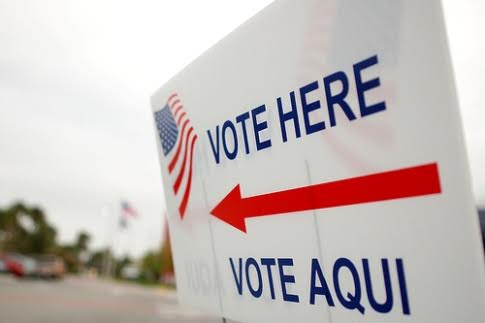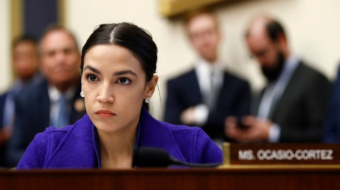
In the November first presidential race, whichever two of the surviving Democratic contenders ends up being the party’s candidate will face a dangerous, reactionary Republican. Much attention has been paid to the outrageous conduct of Donald Trump, but Ted Cruz’ positions on key issues are as bad.
More and more people are realizing that the priority for November has to be not merely stopping Trump, but stopping the Republican candidate whoever he may be. To achieve this is going to require an almost unprecedented mobilization of the base, the more so since all sorts of voter suppression schemes have been put in place by G.O.P.-controlled state legislatures.
There are two danger signs emerging from the primaries. First, the mobilization of voters behind Bernie Sanders and Hillary Clinton is less than the mobilization behind Trump and the other Republicans. Secondly, different sectors are enthusiastically mobilized in support of each of the two surviving Democrats: youth behind Sanders, and older minorities and women behind Clinton. To stop the Republicans from taking the White House and retaining control of the Senate and House of Representatives, both Sanders and Clinton supporters have to be mobilized at the highest level possible behind the Democratic candidate. So there is much catching up to do.
The potential electorate in November will be about 226 million voters, a five percent increase since the last presidential election in 2012. There is a sharp change in the racial and ethnic composition of this potential electorate, with a 6 % increase in African-Americans, a 17 % increase in Latinos, a 16% increase in Asian-Americans, and only a 2% increase in white non-Latinos. This huge increase in Latino voters is driven largely by Latino U.S. citizens reaching 18 years of age, partly by naturalization of immigrants and party by the arrival of large numbers of people from economically distressed Puerto Rico. By a 1917 law, all Puerto Ricans are U.S. citizens and can vote in general elections if they live in the continental United States or Hawaii.
A new study of recent voting patterns among Latino voters shows clearly what is at stake, and part of the work to be done. The study, authored by Professor Laird W. Bergad, Director of the Center for Latin American, Caribbean and Latino Studies at the City University of New York, looks at voter registration and participation among eligible Latinos in national elections since 1992.
In the 24 years since, the number of Latinos eligible to vote in the United States has sharply increased, from 8,778,000 in 1992 to an estimated 28 million this year, nearly 13% of the overall potential electorate. There are large concentrations of eligible Latino voters in some states that are heavy hitters in the Electoral College, including California, Texas, New York, Florida and Illinois. But even in swing states like Virginia where there are fewer Latino voters, they could make a major difference.
But voter registration, more among Latinos than among other sectors, lags behind the number of eligible voters. According to professor Berard’s study, in 2012 only 58.7 percent of potential Latino voters were registered, compared to 75.7 percent of non-Hispanic whites and 73.1 percent of non-Hispanic Blacks, and only 48 percent of potential Latino voters actually voted. Berard points out, however, that “Once registered to vote, Latinos turned out at the polls at fairly high rates: 82.5 percent in 1992 and 81.7 percent in 2012.” He adds: “Compared with the largest voting blocs, non-Hispanic whites and non-Hispanic blacks [sic], whose registered electorates comprised 73 percent of their registered electorates, Latino registration rates were much lower”, yet those Latinos who did register turned out in numbers only somewhat lower than other sectors: 81.7 percent of Latino registered voters actually voted compared with 87 percent of non-Hispanic whites and 90.5 percent of non-Hispanic Blacks.
The overwhelming majority of Latino voters trend Democratic, and in the 2008 and 2012 presidential elections were an important factor in Barack Obama’s victory. This has been true of all major Latino ethnic subgroups with the exception of Cuban-Americans, and this pattern is expected to continue this year. But even among Latinos of Cuban origin in Florida, this is changing: Younger Cuban Americans, or Cuban Americans born in the United States, are now moving into the Democratic Party column in increasing numbers, according to voter registration statistics provided by the the Pew Research Center.
Today, two-thirds of Latino registered voters in Florida are of national origins other than Cuban. This trend, plus the increase in numbers of non-Cubans among Florida Latinos, means that an important historic pattern is now broken: It is no longer as necessary as formerly for politicians of both major parties to play up to right wing Cuban exiles in elector-rich Florida on issues like U.S. relations with Cuba. This trend may well have played a role in the Obama administration’s decision to normalize U.S. relations with Cuba.
There is a strong overlap between the Latino eligible voter population and the potential youth vote. Millenials, mostly born in the United States, now make up more than half of the Latino vote. But there is also a pattern of first generation immigrants voting at a higher rate than U.S. born Latinos.
At writing, it appears that Donald Trump will be the most likely Republican presidential candidate. His statements about Mexicans and Mexico, his threat to carry out massive deportations of undocumented immigrants, plus his suggestion that he will somehow deprive immigrants born into the United States to undocumented parents of their U.S. citizenship, have been taken as deeply offensive and threatening not only by people of Mexican origin but by other Latino sectors as well, including Puerto Ricans. Supporters of the Democratic candidates are hoping that this will drive increased Latino voter registration and turnout this year, and many Latino and immigrants’ rights organizations and activists are stressing this theme.
The practical conclusions to be drawn are the following:
*In November 2016 Latino voters will be, more than ever, a crucial factor in blocking the onslaught of the Republicans and the ultra right.
*Even in areas where there are not huge numbers of Latino voters, they can make a big difference in electoral outcomes.
*When Latinos eligible to vote actually register, they vote in percentages comparable to those of other groups of voters. But their registration numbers have tended to lag in comparison with the voting-eligible Latino population.
*High priority, then, has to be given to registering eligible Latinos, and especially Latino youth, to vote.












Comments